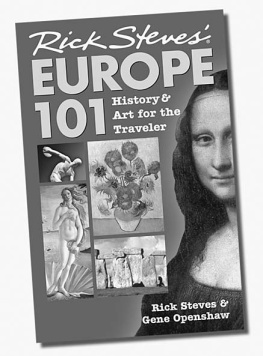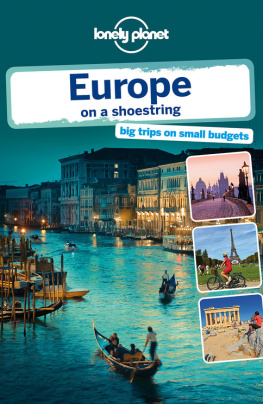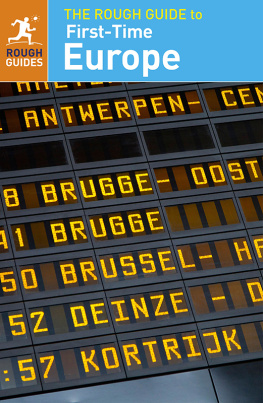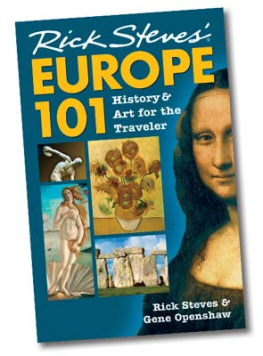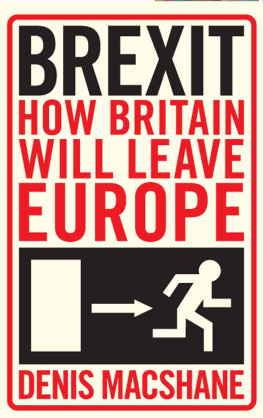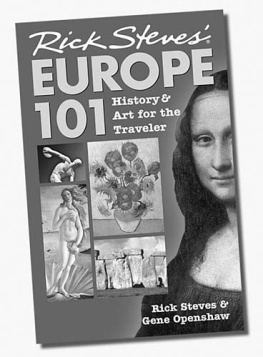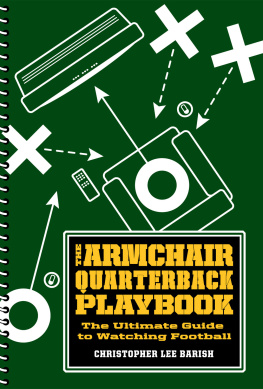The Armchair Diplomat on Europe
Your Opinionated Guide to the Hot Shots, Hot Spots and Incendiary Issues
MELISSAROSSI
PENGUIN BOOKS
PENGUIN BOOKS
Published by the Penguin Group
Penguin Books Ltd, 80 Strand, London WC2R 0RL, England
Penguin Group (USA) Inc., 375 Hudson Street, New York, New York 10014, USA
Penguin Group (Canada), 90 Eglinton Avenue East, Suite 700, Toronto, Ontario, Canada M4P 2Y3 (a division of Pearson Penguin Canada Inc.)
Penguin Ireland, 25 St Stephens Green, Dublin 2, Ireland (a division of Penguin Books Ltd)
Penguin Group (Australia), 250 Camberwell Road, Camberwell, Victoria 3124, Australia (a division of Pearson Australia Group Pty Ltd)
Penguin Books India Pvt Ltd, 11 Community Centre, Panchsheel Park, New Delhi 110 017, India
Penguin Group (NZ), cnr Airborne and Rosedale Roads, Albany, Auckland 1310, New Zealand (a division of Pearson New Zealand Ltd)
Penguin Books (South Africa) (Pty) Ltd, 24 Sturdee Avenue, Rosebank 2196, South Africa
Penguin Books Ltd, Registered Offices: 80 Strand, London WC2R 0RL, England
www.penguin.com
Published in Penguin Books 2005
Copyright Melissa Rossi, 2005
All rights reserved
The moral right of the author has been asserted
Except in the United States of America, this book is sold subject to the condition that it shall not, by way of trade or otherwise, be lent, re-sold, hired out, or otherwise circulated without the publishers prior consent in any form of binding or cover other than that in which it is published and without a similar condition including this condition being imposed on the subsequent purchaser
ISBN: 978-0-14-195422-6
Contents
To Mel and Ellen for passing on their thirst for travel and learning
Acknowledgements
So many people helped in the creation of this book that it is impossible to name them all. However, here are but a few to whom I will be eternally grateful. Miss Laura Milan for diligent research; Roxanne Rowles for chronic insights; my wonderful research assistant Sophie Cotter for everything; Katherine Dunn for being the most gracious person on the planet; Melik Boudemagh for his all-purpose brilliance; Anne Pramaggiore and the Pramaggiore clan for wonderful vacations; Karl Abramovic for being; Liliana Cabal, Nils Petersen and Judith Wienerrother for digging up articles; Sarah Jane Kincaid and Enrique Garcia Lozano for general kindness; Erin and Marcello, Stefano the shoemaker, Katya and Lucca, and Paula and Roberto for Italian insights; Max, Marina, Sofia and Bill for wild nights across Europe; Iposa for fab lunches; Christoph Kirsch for croissants; Guiliano Smaldino for surprises; all my flatmates (especially Lotte, Katrina and Karsten) for being so helpful; Edit, Kata, Peter and Robert and the Hungarian Tourism Board for peeling back Hungary; Latvian President Vaira Vike-Freiberga and her assistant Aiva Rozenberga for welcoming me to the presidential castle; Prime Minister Juhan Parts and his assistants for meeting with me in Tallinn; Ritums Ivanovs, Andris Vitolins, lovely Maria, and Asnate Smeltere for showing me Riga; Lee Anthony Courchesne and Brenden Murray for Barcelonas multicultural magnet Andu; Anne Lingling Millereau for making Brussels fun; Keith Bellows, Sheila Buck-master, Jayne Wise and all the others at National Geographic Traveler for sending me across Europe; Michael Meyer, Chris Dickey, Stryker McGuire and Ginny Power for eye-opening Newsweek assignments; Catherine and Sam Couplan for Monday dance-a-thons; Philippe Herzog and Gypsy for all-night Parisian tours; Esther Gomez and Pilar Vico for helping me to better understand Spain; Ricky Burdett, Christina Roosen, Luis Afonso, master musician Don G, puppeteer PJ and Mifalda of Portugal for enlightening interviews; Davil for showing me Denmark; Sue of Raval for letting me take over her dining room; Peter Lemeer and all the Peters in Maastricht who helped put together the pieces of the puzzle; Air Baltic for making travel to the Baltics easy; the particularly helpful tourism boards of Spain, the Netherlands and Belgium, and all European tourism boards (except for those in the UK and France) who kindly donated pictures; the hundreds of Europeans whom I interviewed on planes, trains and in cafs; Carlos Mundy for being the maestro of the kitchen; the assorted MEPs and thinktankers who provided invaluable info; Andrew Henty and the crew in production, Richard Duguid and John English for their thoughtful copy editing; Elisabeth Merriman for diligently pulling together copy; and above all my fantastic agent Bill Gladstone and my brilliant editor Helen Conford who patiently guided me through this.
Preface
This book was born on yet another rainy night in Maastricht, my former home in the Netherlands, when I received a phone call from Florence, Italy. On the line was the artist Erin Murphy who always keeps abreast of international affairs. Melissa, she said, sounding vaguely troubled, exactly what is the EU?
I didnt miss a beat. The European Union is a supranational umbrella that makes laws concerning the economic, agriculture, transportation, energy, judicial and environmental affairs in member countries. Members pay dues to the EU, which in turn allocates money back to countries for such things as agriculture and infrastructure. Many of its members use the shared currency, the euro, and the EU represents the biggest trading bloc in the world.
There was a long pause.
Erin, did that make any sense?
No, she replied. I dont understand what the EU is and I dont even understand what Europe is any more. Can you figure it out and let me know?
I promised to get back to her. A year later, I called back.
During that year, which I spent travelling across Europe, writing articles for Newsweek and National Geographic Traveler, interviewing residents, analysts, journalists and politicians, and drawing information from government documents, think tanks, NGOs, newspapers, websites and numerous insightful publications, I realized that Erin certainly isnt alone. Most Europeans are baffled about what contemporary Europe is and how it fits into the EU. And from confusion springs apathy and if citizens become apathetic and kiss their power away, then democracy goes with it and EU citizens might as well call up Brussels and tell the EU they can do whatever they want because nobody understands and nobody cares.
Thats why I wrote this book: to offer Europeans an opinionated guide that provides the basics for an understanding of European affairs. In a way this is a geopolitical travel book, and as with travelling, two things hold true: you cant make sense of the terrain without a map, and it helps quite a lot if you know the basics of the language. Thats what this book provides: a general map and language guide to the countries that are part of the European Union, plus Switzerland and Norway. By map, however, I mean more than just physical layout: this book also pulls in the histories, grudges and defining issues and tries to show how the separate pieces of Europe fit together. And it also gives you the basic language, in the form of names and places that are necessary vocabulary to put together the puzzle these days.
I hope as you delve into this book that it makes you laugh, makes you cry, that it empowers you, makes your mouth drop open in disbelief, and that it helps you understand the relevant issues that are defining Europe today. Most of all, I hope it piques your interest, and makes you want to learn more about the amazing part of the world that calls itself Europe.
Melissa Rossi
Barcelona
November 2004
Introduction
Europe is at the most awkward moment of its history. Certainly there have been more violent times, when emperors, kings and knights launched battles and wars that left the ground blood-soaked and scorched. There have been more volatile eras, when ideas and ideals brewed up revolutions that had heads rolling in the streets. And there have been more repressed periods, as when half the continent was forced into communism and the other half turned its back and tried to forget.


